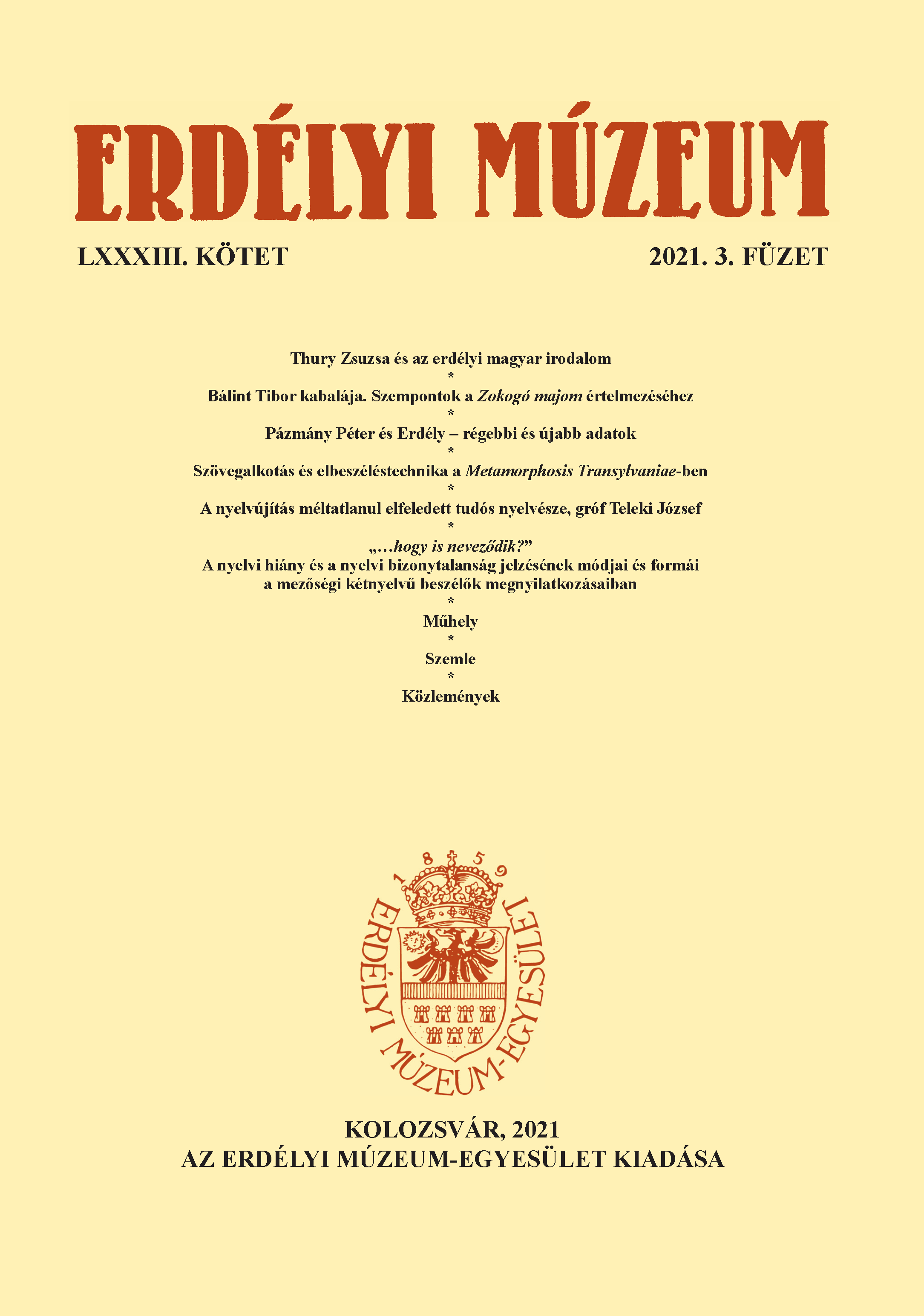Bálint Tibor kabalája. Szempontok a Zokogó majom értelmezéséhez
Tibor Bálint’s Lucky Charm: Following the Reception of “The Wailing Monkey”
Author(s): Zsuzsa DemeterSubject(s): Hungarian Literature, Sociology of Literature
Published by: Erdélyi Múzeum-Egyesület
Keywords: reception; literary journals; Tibor Bálint’s prose; The Wailing Monkey; Hungarian literature;
Summary/Abstract: 1969 is known to be the year when Hungarian literature in Romania finally comes of age, and the highly anticipated novel is born. We may come to this conclusion based on the reviews and debates centered around three essential novels (widely acclaimed by readers and critics alike): “The Wailing Monkey” (“Zokogó majom”) by Tibor Bálint, “Anvil, Drums, Bell” (“Üllő, dobszó, harang”) by István Szilágyi and “My Mother Promises Sweet Dreams” (“Anyám könnyű álmot ígér”) by András Sütő. Nonetheless, the release of “The Wailing Monkey” was not without precedent. To see that, it is enough to look up issues of two literary journals, “Utunk” and “Igaz Szó”, starting from Bálint’s debut in 1955. Sketches, interviews, glosses, portraits, confessions, essays protrude behind the years of preparation for writing “The Wailing Monkey”. Through their examination, we may determine not only certain tropes of the novel mentioned above, but important trademarks regarding Tibor Bálint’s prose.
Journal: Erdélyi Múzeum
- Issue Year: LXXXIII/2021
- Issue No: 3
- Page Range: 13-26
- Page Count: 14
- Language: Hungarian

